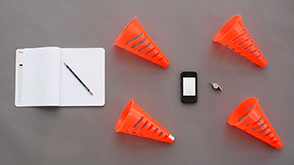Catch Me If You Can
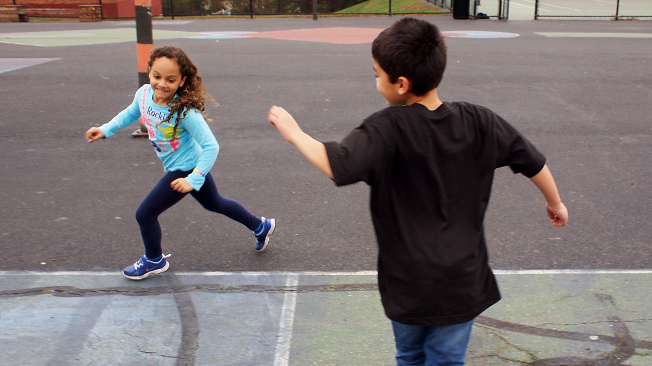
What Is This Activity?
In this tag activity, experience how animals use the features of their habitats, such as trees, bushes, or rocks, to hide from predators or to help them sneak up on prey.
Introduction
-
-
00:00
What Are Kids Learning?
- Predators are animals that hunt and eat other animals.
- Prey are animals that predators hunt and eat.
- Prey have strategies to make it hard for predators to catch them. Blending into the background and living in places that are hard for predators to reach are two such strategies.
- Predators also have strategies that help them catch prey, such as blending into the background and hunting as a group.
How Do You Get Ready?
- Read the activity and gather the materials.
- Scout out places where this activity will work well, such as a neighborhood park or schoolyard.
- Notice what kinds of living things (plants and animals) you find and where you find them.
- Troubleshoot any safety concerns (traffic, poison ivy, sharp objects, etc.).
Warm-up 10 minutes
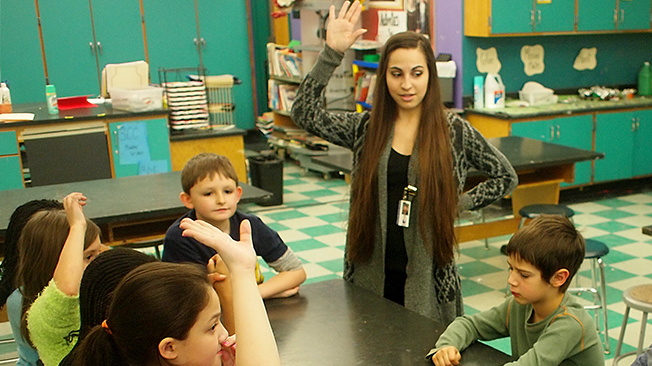
Start a conversation about hiding places.
Ask:
- Where are some of your favorite places to play hide-and-seek?
- Do you think a basketball court or sports field would be a good place to play hide-and-seek? Why or why not?No, both are wide open with no places to hide.
Then talk about how animals use hiding places. As you talk about animals and hiding places, use the terms predator and prey.
Ask:
- Why might animals look for places to hide?
To be safe, to avoid predators - What are some animals around here that might be predators?Common predators in urban areas include hawks, cats, robins, owls, bats, and spiders. Be sure kids understand that predators do not need to be large animals, such as wolves or tigers. A spider is a predator, and so is a robin!
- What animals might be prey for these predators?Squirrels, mice, birds, insects, worms
- Can the same animal be both predator and prey?Yes, many predators play both roles in an ecosystem. A robin is a predator of worms and insects, but might become prey for a hungry owl or hawk.
Activity 45 minutes

Part A Tag, You're Prey!
Tell kids that, next, they will take on the roles of predators and prey in a variety of places. Establish ground rules for tag games before you go outdoors. Tell kids to be aware of their surroundings, to look out for one another, and to tag only with the fingers of one hand - no pushing is allowed.
Then:
- Head outdoors to an open space, such as a basketball court or open sports field.
- Show kids the boundaries they should observe and mark them with cones.
- Have kids play tag as pairs, with partners switching roles a few times, giving each kid experience as both predator and prey.
- Give kids two minutes to play tag in pairs, then blow the whistle or otherwise indicate that time is up.
Ask:
- Was it easier to be a predator or prey animal in this game? Why?
- Did prey animals have any places to hide?
Next, play tag as a whole group, assigning one kid to be the predator (the kid who is "it"). Explain that in this game, once you are tagged, you need to sit out. After two minutes, have the group play one more round, only this time, assign three kids to be "it." That way, the "predators" can imitate cooperative hunting similar to wolves, lions, or orcas (i.e., killer whales), where several predators work together to catch one animal.
Ask:
- How was being a prey animal in these two games different than being a prey animal in the first?
- How did being a predator in these two games compare with being a predator in the first?
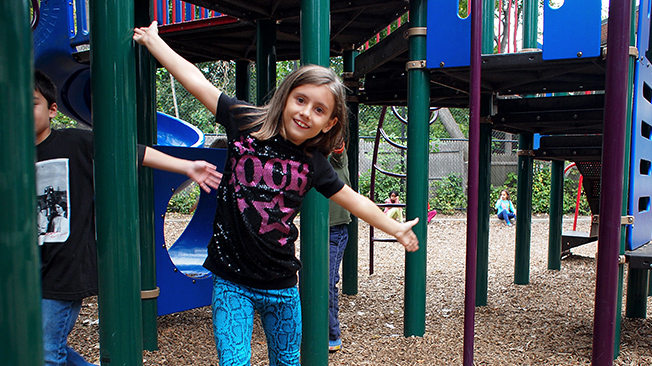
Part B Hide or Be Eaten!
Take the group to a place full of obstacles, such as a playground full of equipment. As a ground rule, tell them is to be no climbing on structures. Remind kids to be aware of their surroundings and of each other.
Ask:
- How is this setting different from the one we just came from?
- Do you think it will be easier or harder for predators to catch prey here? Why?
- Have kids play the same tag games as you played above. Talk about how being both predator and prey differed in this setting.
- If time permits, play another series of games, this time modeling how a predator's size affects how it uses the habitat.
Time how quickly kids can walk from one side of the playground to the other-navigating through and under slides, climbing structures, or swing sets. Do this three different times:
- with arms by their sides;
- holding arms out (modeling how a larger animal might have a more difficult time navigating through obstacles);
- linking arms with a partner and stretching their free arms out as far out as they will go.
Compare the times of all three races, then discuss how the races compared.
Wrap-up 5 minutes
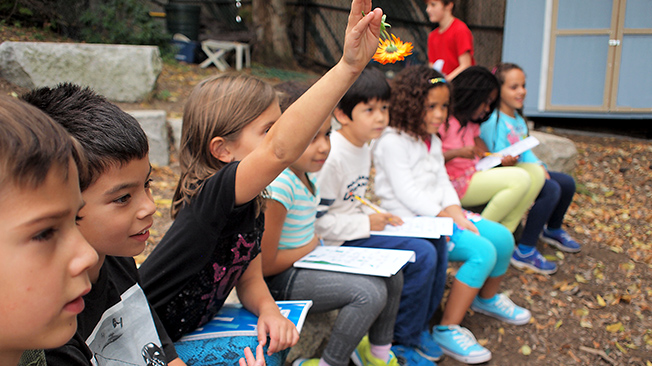 After the games, gather the group together. Talk about how the games reflect how animals use their habitats.
After the games, gather the group together. Talk about how the games reflect how animals use their habitats.
Ask:
- Where was it easier to be a predator: in the open or on the playground?In the open, because it's easier for the predator to catch the prey when there are few hiding places
- Where was it easier to be prey?On the playground, because it offers many more places to hide or otherwise escape predators
- How does the size of a predator affect how it uses the habitat?Larger predators can't easily get into small hiding spaces, but smaller ones can. Large predators catch more prey in the open.
- Knowing what you now know about hiding places, where do you think you might find more animals: in the middle of a sports field, or along the field's edge, where shrubs and trees grow? Why?Along the edge, because there are more places for animals to hide - predators and prey alike
- What might be some hiding places for prey in our neighborhood?Answers will vary. Places like trees, bushes, buildings can all offer hiding places.
Explore Some More
Hiding in Plain Sight
Search the Internet for animals that use camouflage, coloring that helps them blend in with their surroundings. Then head outdoors with craft materials and have kids make camouflaged "animals." The animals could be pieces of paper cut out in the shape of an animal, such as a fish or a bird, and colored in such a way that it matches its surroundings. Add texture to the "animals" by gluing on pom-poms, string, or felt. When done, take turns finding one another's animals. You can also do this activity indoors by having your child color in the animals so that they blend with some part of your classroom - a poster on the wall, a floor tile, a desk. Make a game of it by sending half of the group out of the room. While they are gone, have kids tape their animals to the places they are meant to blend in with. Then bring the other half of the group back in and see whose animal is the hardest to find. When all the animals have been found, switch roles.

